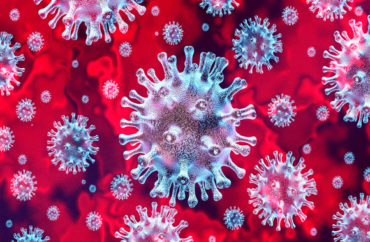
Government restrictions on individuals and businesses in the name of COVID-19 prevention are largely based on the theory that people without symptoms can easily transmit the novel coronavirus.
This theory has been undercut by international research, and U.S. biostatistics researchers have now added domestic confirmation.
The American Medical Association’s JAMA Network Open published their research earlier this month, finding that the riskiest environment for viral transmission – the home – is not particularly risky when the infected person is not symptomatic.
The five researchers sought to identify the “household secondary attack rate” for SARS-CoV-2, the virus that causes COVID-19. Secondary attack rate refers to the number of new cases among contacts divided by the total number of contacts.
Four of the five are in the University of Florida’s Department of Biostatistics, while the fifth is in the University of Washington’s Department of Biostatistics and the Fred Hutchinson Cancer Research Center in Seattle.
They conducted a “meta-analysis of 54 studies” with nearly 78,000 participants. The overall rate in households was 16.6 percent, but the gap between individuals with or without symptoms was massive. (The study often refers to “asymptomatic” – those who never develop symptoms – and “presymptomatic” – those who may later develop symptoms – in the same category.)
Individuals with symptoms were more than 25 times likelier to infect household members (18 percent) than those without symptoms at the time (0.7 percent), showing that sustained close physical contact is not enough to easily transmit the virus.
The meta-analysis also found that adults are nearly twice as likely to be infected from a household contact (28.3 percent) as are children (16.8 percent). Spouses (37.8 percent) are more than twice as likely to get infected as are other family contacts (17.8 percent).
Somewhat surprisingly, two-person households have a substantially higher secondary attack rate (41.5 percent) than do four-person households (22.8 percent).
“These findings suggest that households are and will continue to be important venues for transmission, even in areas where community transmission is reduced,” particularly because people with “suspected or confirmed infections” are invariably ordered to “isolate at home” (#StayHome), the researchers concluded.
While the researchers noted they only had “few studies” of asymptomatic or presymptomatic transmission to review, the findings were “consistent with other household studies reporting asymptomatic index cases as having limited role in household transmission.” (In another section, they distinguished between asymptomatic and presymptomatic infection, citing “some studies” that report “the timing of peak infectiousness at approximately the period of symptom onset.”)
The COVID-19 analysis publication Rational Ground said that even the 0.7 percent rate for transmission without symptoms may too high, simply by definition:
The asymptomatic/presymptomatic secondary attack rate is not statistically different from zero, and the confidence interval is technically 0.7 ± 4.2, resulting in a range of -3.5%-4.9%, but attack rates cannot be negative, so it is truncated at 0.
Jennifer Cabrera, a contributor to Rational Ground, said its article on the study was getting hammered by web traffic.
Read the study in JAMA Network Open.
IMAGE: Lightspring / Shutterstock.com
Like The College Fix on Facebook / Follow us on Twitter




Add to the Discussion